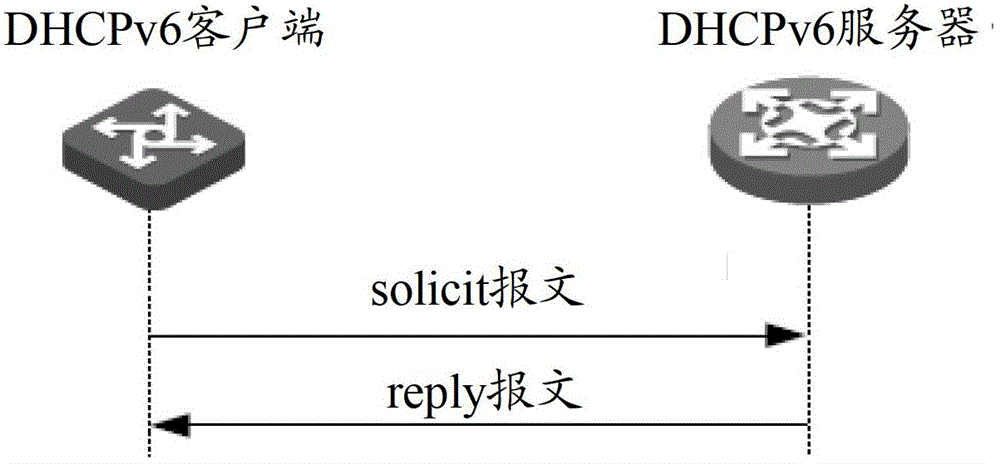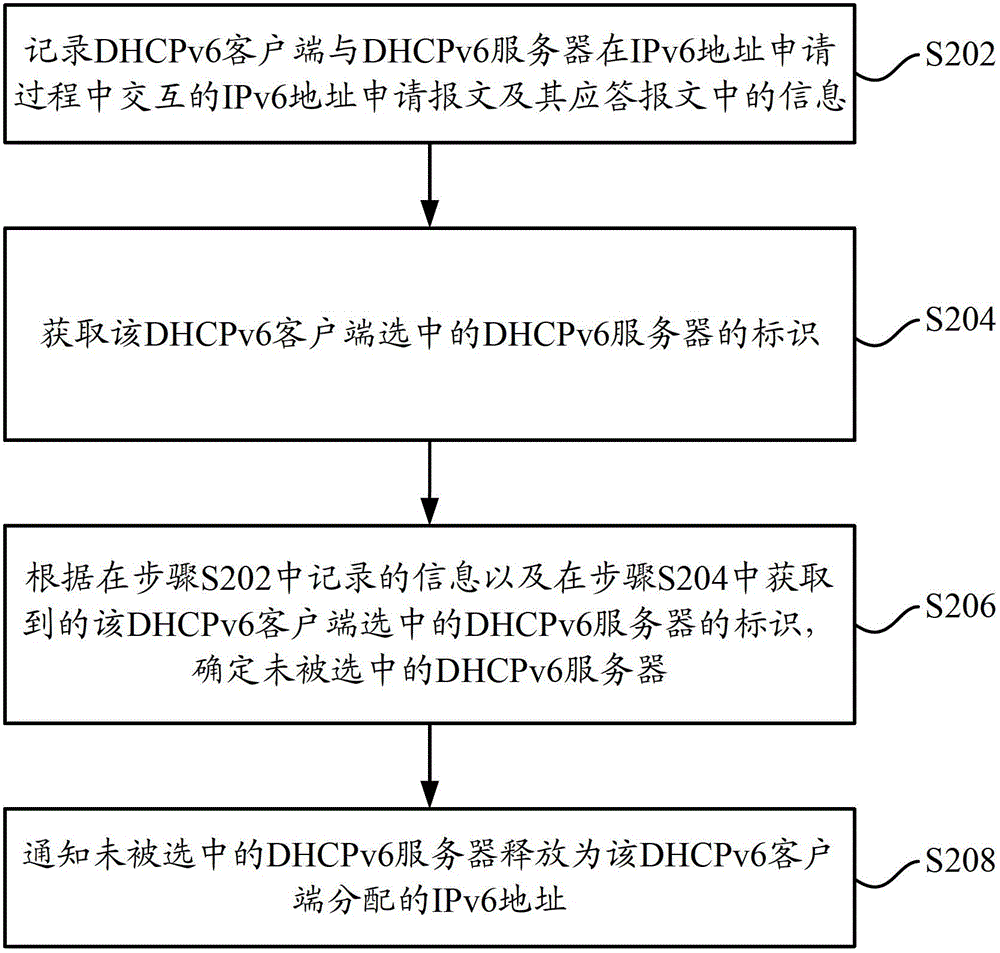Method and equipment for releasing Internet protocol (IP)v6 address
An implementation method and ipv6 address technology, applied in the network field, can solve problems such as address waste, and achieve the effect of solving address waste and improving address use efficiency
- Summary
- Abstract
- Description
- Claims
- Application Information
AI Technical Summary
Problems solved by technology
Method used
Image
Examples
Embodiment 1
[0035] figure 2 It is a flow chart of a method for releasing an IPv6 address in Embodiment 1 of the present invention, and the method can be applied in DHCPv6 technology. Such as figure 2 As shown, the method includes the following steps:
[0036] Step S202, recording the information in the IPv6 address application message and the response message exchanged between the DHCPv6 client and the DHCPv6 server during the IPv6 address application process;
[0037] During the process of the DHCPv6 client applying for an IPv6 address through the rapid address allocation method, the DHCPv6 client and the DHCPv6 server will exchange solicit messages and reply messages carrying the rapid commit option. For details, please refer to the background technology section, and will not repeat them here . Similarly, in the process of the DHCPv6 client applying for an IPv6 address through the confirm message, the DHCPv6 client and the DHCPv6 server will also interact to determine whether the I...
Embodiment 2
[0057] In the application of DHCP, for security reasons, DHCP snooping is often deployed on the data forwarding device responsible for forwarding packets between the client and the server, such as a switch, that is, the DHCP snooping function is enabled on the data forwarding device. When DHCP snooping is enabled on the data forwarding device, it will listen (or listen) to all DHCP messages, and can extract and record information such as IP addresses and MAC addresses from received DHCP messages. In addition, DHCP snooping allows a physical port to be set as a trusted port or an untrusted port. Trusted ports can normally receive and forward DHCP packets, while untrusted ports discard received DHCP packets. In this way, the shielding effect of the data forwarding device on the fake DHCP server can be completed, ensuring that the client obtains an IP address from a legitimate DHCP server.
[0058] In the embodiment of the present invention, DHCP snooping can be used to monitor ...
Embodiment 3
[0070] For the methods of the first and second embodiments above, the third embodiment of the present invention provides a data forwarding device, which can execute the methods in the first and second embodiments, and the data forwarding device can be located between the DHCPv6 client and the DHCPv6 server Between, forward the data packets exchanged between the two. Such as Figure 6 As shown, the device includes the following modules: a record module 102, an acquisition module 104, a determination module 106 and a notification module 108, wherein:
[0071] Recording module 102, for recording the information in the IPv6 address application message and the response message thereof interacted between the DHCPv6 client and the DHCPv6 server;
[0072] Wherein, the IPv6 address application message can be: the request solicit message that the DHCPv6 client sends to the DHCPv6 server to carry the rapid commit option, and the response message is: the reply reply message that the DHCP...
PUM
 Login to View More
Login to View More Abstract
Description
Claims
Application Information
 Login to View More
Login to View More - R&D
- Intellectual Property
- Life Sciences
- Materials
- Tech Scout
- Unparalleled Data Quality
- Higher Quality Content
- 60% Fewer Hallucinations
Browse by: Latest US Patents, China's latest patents, Technical Efficacy Thesaurus, Application Domain, Technology Topic, Popular Technical Reports.
© 2025 PatSnap. All rights reserved.Legal|Privacy policy|Modern Slavery Act Transparency Statement|Sitemap|About US| Contact US: help@patsnap.com



